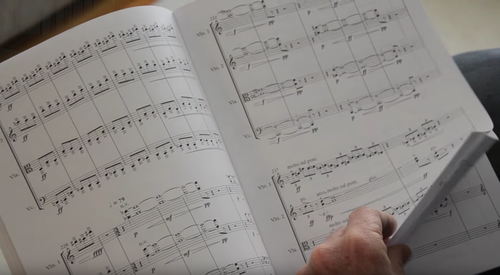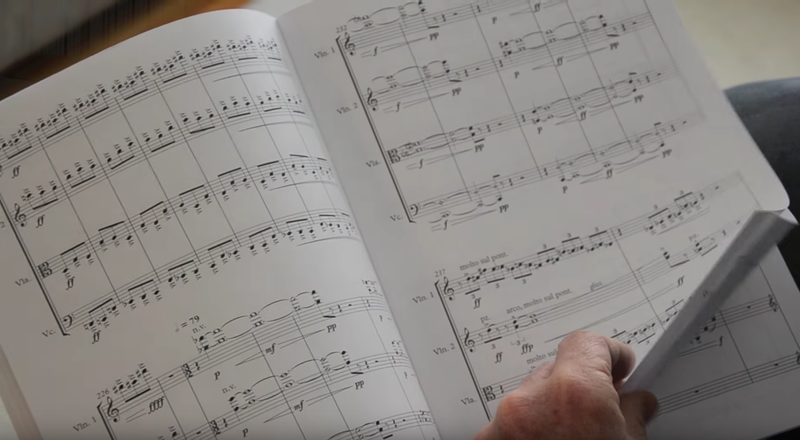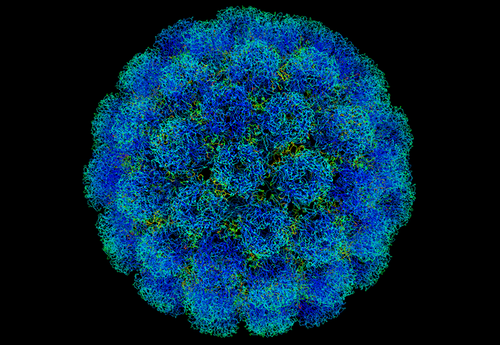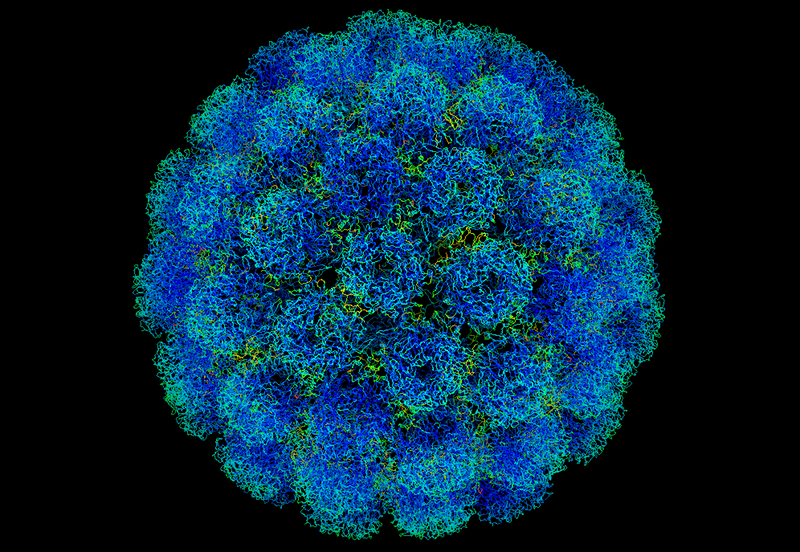Arts & Culture: A Quartet for Soft Matter
Mark Bowick wanted to do something different. Conferences often schedule breaks for cultural outings: a trip to the theater, a tour of historical landmarks, or wine tasting at a local vineyard. But rarely are these activities time-out from talks on cutting-edge research—scientists inevitably end up discussing their research in these settings. Instead, for the recent Active and Smart Matter conference in Syracuse, New York, Bowick, who is the director of the research program on soft-matter physics at Syracuse University, envisioned a distinctive experience for the scientists coming to Syracuse, as well for the residents of the town: A musical composition inspired by soft-matter physics that would premiere during the meeting.
“[The idea] just came to me as I was sitting at my desk one day,” said Bowick. He emailed his colleague Andrew Waggoner, a composer and professor of composition at the University’s Setnor School of Music, to see if he would be interested in taking this challenge on. Waggoner instantly replied “yes” and Hexacorda mollia, a piece for string quartet (Fig. 1), was born.
Hexacorda mollia revolves around the theme of order and disorder in soft matter—materials like liquid crystals and biological organisms that can be easily deformed by thermal fluctuations or an external stress, such as an electric or magnetic field. For many of these systems, this form of disorder is required to create ordered structures that can perform some function. For example, a small temperature change in liquid crystals can push randomly positioned molecules to spontaneously align in one direction. The ordered system can then be used to reflect light in cool and useful ways. For Bowick, the ubiquitous interplay of order and disorder in soft-matter research made it an obvious theme for the composition, and one he thought was broad enough to inspire a composer.
Waggoner knew “next to nothing” about soft matter when he took on the commission. But he was well acquainted with the concepts of order and disorder. “Music is always going through various states of order to disorder and back again, in ways that [scientists] might recognize as phase transitions,” said Waggoner. To get into the specifics of soft matter, Waggoner leafed through images of soft-matter systems to find ones that triggered musical ideas. He then read up on the underlying physics and occasionally picked Bowick’s brain for input.
Two systems that particularly caught Waggoner’s imagination were liquid crystals, specifically those based on cholesterol molecules, and icosahedral viruses (Fig. 2). The twenty triangular sides of the virus are mirrored in the “da-da-da, da-da-da” three-beat rhythmic phrases that reoccur throughout the piece, while the chemical structure of cholesterol manifests through a 6-2-6-6-6-7 pattern in the notes. “When I started to clap out [cholesterol’s structure] I heard something that was rhythmically exciting, with an unpredictable groove that would always be recognizable,” said Waggoner. “If you didn't know any of this [before] hearing the piece, you might not make the connection, but if you do know, I think you can really hear it.”
Waggoner’s piece is not the result of a literal transliteration of a physical phenomenon into musical form, as was the "chirp" of colliding black holes that could be heard all over the Internet after LIGO announced its detection of gravitational waves in February 2016. Rather than copying the shape of molecules into a melody, Waggoner wanted to portray his emotional response to the images. “In my experience, the latter approach usually yields more interesting music,” he said.
Hexacorda mollia was performed at the conference by the JACK quartet. The piece takes listeners on a journey from the “spooky” realm of “creepy-looking” viruses through to the ever-changing world of rod-like cholesterol liquid crystals. As the rods transition from lying randomly to all standing to attention in a well-ordered row, the musicians switch from playing long drawn-out notes with their bows to suddenly plucking the strings as the molecules jump up one by one. The voyage ends with the listener departing the nanosized world of soft matter and zooming out into the cosmos. The same rhythms and phrases can be heard, if you listen really carefully, but slowed down to galactic time scales, while the violin melodies get higher and higher before slowly fading out.
For the conference’s main organizer, Cristina Marchetti, who is also a professor of soft-matter physics at Syracuse University, and married to Bowick, the concert was a success. “I have been at conferences where there are evening concerts before and never found them terribly engaging or memorable,” said Marchetti. But she found the link to science in this piece provided the emotional tie that made this concert unique.
An evening of contemporary music at a conference was a “new and extremely enjoyable experience” for conference speaker Kristian Müller-Nedebock from Stellenbosch University in South Africa. “[The concert] resulted in interesting, less-conventional conference discussions, while I pondered about the connection to art,” he said. “It mirrored the scientific ideal of meetings to stimulate fresh and interesting connections and collaborative explorations.”
–Katherine Wright
Katherine Wright is a Contributing Editor for Physics.







